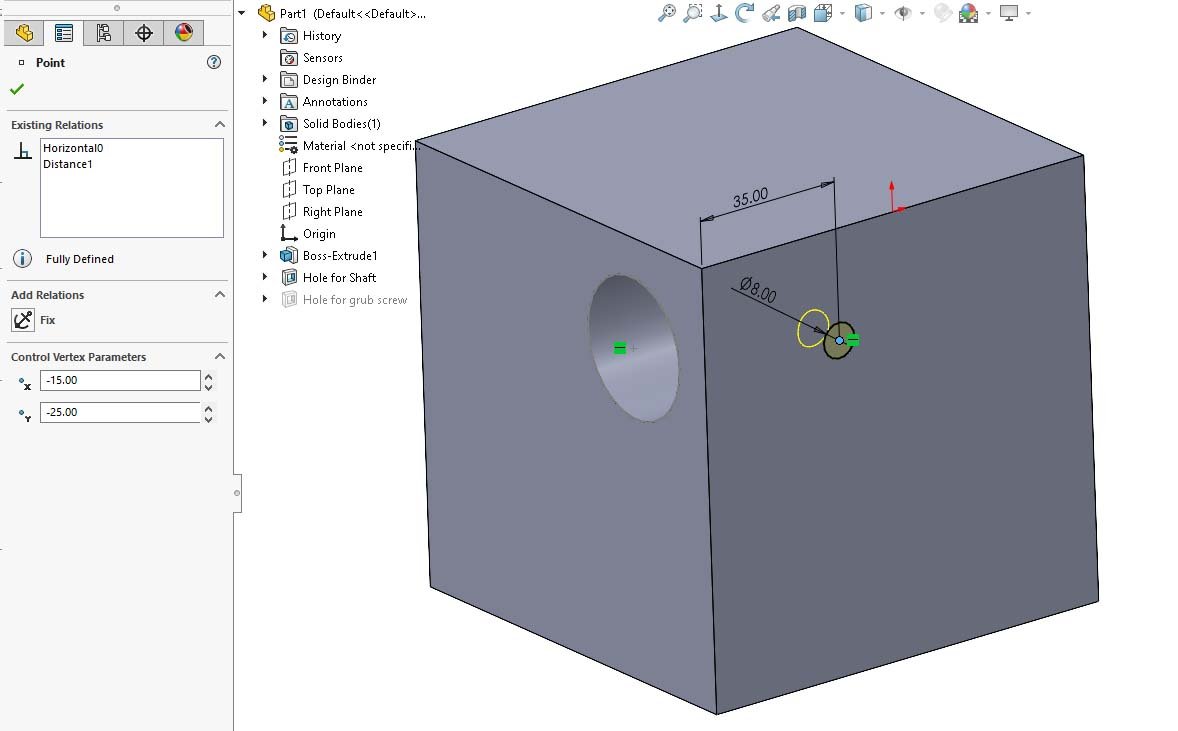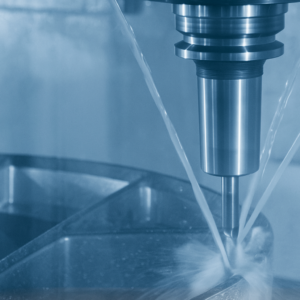In the precision-driven world of modern manufacturing, few tools have revolutionized design and production quite like CAD (Computer-Aided Design). From aerospace engineering and automotive development to electronics and architecture, CAD has become the digital backbone of how physical products are imagined, developed, tested, and produced.
In this guide, we dive deep into what CAD is, how it works, and why it’s essential in today’s competitive manufacturing landscape—especially when combined with CNC machining.
What Exactly is CAD?

Over the Shoulder Shot of Engineer Working with CAD Software on Desktop Computer, Screen Shows Technical Drafts and Drawings. In the Background Engineering Facility Specialising on Industrial Design
CAD, or Computer-Aided Design, refers to the use of specialized software to create detailed 2D drawings or 3D models of physical components before they are manufactured. It replaces traditional manual drafting with digital precision and simulation capabilities.
With CAD, designers can:
Visualize their ideas in realistic dimensions
Modify designs instantly
Run simulations to test product performance
Communicate design intent clearly to stakeholders and machines
Whether you’re developing a smartphone casing, designing a car engine block, or building a medical device, CAD provides the tools to make it happen with maximum efficiency and minimum error.
How Does CAD Work?
At its core, CAD software operates on a coordinate system—typically X, Y, and Z axes—allowing every line, point, and shape to be placed precisely in virtual space.
Key CAD Operations Include:
Sketching: Drawing 2D shapes using points, lines, arcs, and splines.
Modeling: Converting 2D sketches into 3D objects using extrusion, lofting, or revolution.
Assembly: Combining multiple parts into a system to verify fit and movement.
Simulation: Testing mechanical strength, heat resistance, and stress points in virtual environments.
Annotation and Documentation: Adding technical details like tolerances, dimensions, and materials.
CAD doesn’t just create static drawings—it builds intelligent models that interact with downstream manufacturing processes, like CNC.
Why Does CAD Matter in the CNC Machining World?
🧠 CAD Is the Brain, CNC Is the Hands
Think of CAD (Computer-Aided Design) as the digital drawing board. It’s where engineers and designers create the full plan for a part—its size, shape, curves, holes, and everything in between.
Now think of CNC machines as the hands. They read the CAD file and follow it step by step, carving out the part from metal, plastic, or another material.
No CAD? No plan.
No CNC? No execution.
They work best when they work together.
🎯 What Does CAD Actually Do for CNC?
Here’s what makes CAD a must-have for modern CNC machining:
✅ It Creates a Digital Blueprint
Instead of using hand-drawn sketches, CAD gives the CNC machine a precise, detailed map to follow.
✅ It Reduces Mistakes
Everything is measured down to the fraction of a millimeter. That means fewer errors, less wasted material, and better-fitting parts.
✅ It Speeds Up the Process
Once the CAD model is ready, it can be sent straight to the CNC machine. There’s no guesswork, no redraws, and almost no delay.
✅ It Handles Complex Shapes
Have a part with curves, holes, or intricate geometry? CAD can handle that—and the CNC machine can follow it exactly.
🔄 From Idea to Reality—Fast
At shops like Worthy Hardware, we use CAD every day to turn customer ideas into real, physical products. Whether it’s a single prototype or a full production run, CAD gives us the control and accuracy we need to get it right the first time.
In short:
👉 CAD tells the machine what to do.
👉 CNC makes it happen—fast and flawlessly.
A Brief History of CAD
CAD’s roots trace back to the early 1960s when Ivan Sutherland’s “Sketchpad” introduced the idea of drawing on a screen with a light pen. By the 1970s and ’80s, CAD software was being adopted by major industries like aerospace and automotive.
Key Milestones:
1962: Sketchpad demonstrated interactive computer graphics.
1982: AutoCAD launched, democratizing CAD for engineers and architects.
2000s–Present: Cloud-based tools (like Fusion 360) and integrated CAD/CAM platforms emerged.
Today, CAD is essential for anyone involved in product design, prototyping, or precision manufacturing.
The Symbiotic Relationship Between CAD and CNC Machining
The relationship between CAD and CNC is much like that between an architect and a construction crew:
CAD: The Digital Architect
Creates precise, scalable, and editable blueprints
Defines features like holes, fillets, threads, and tolerances
Ensures manufacturability through simulation and design rules
CNC: The Master Builder
Reads CAD-generated toolpaths via CAM software
Executes high-speed cutting, milling, drilling, or turning
Delivers parts to spec, often with sub-millimeter accuracy
Together, CAD and CNC shorten development cycles, reduce costs, and improve product consistency.
Types of CAD Systems
🧾 1. 2D CAD – The Classic Drafting Tool
This is the old-school version of CAD and is still widely used today. Instead of working with 3D shapes, you’re working with flat drawings, like blueprints.
Think lines, circles, and shapes drawn on a flat surface.
Used for floor plans, electrical diagrams, and simple layouts.
It’s great for when you don’t need to show depth or volume.
🛠 Best for: Architects, electrical engineers, and quick layout sketches.
🎯 2. 3D CAD – The Realistic Modeling Tool
This is the type of CAD most people think of today. It allows you to create parts or objects that look like the real thing—with length, width, and depth.
There are a few sub-types of 3D CAD, each giving you more control or realism:
💡 A. Wireframe Models
Picture a 3D object made out of lines—like a skeleton.
Easy to sketch but hard to understand visually.
🧱 B. Surface Models
Adds “skin” over the wireframe.
Looks better but doesn’t show what’s inside the object.
🧊 C. Solid Models
The most complete type—inside and out.
It shows mass, weight, and internal details.
Perfect for CNC machining and manufacturing because it’s highly accurate.
🛠 Best for: Mechanical parts, 3D-printed prototypes, and anything needing precision.
🔧 3. Parametric Modeling – Design That Follows Rules
This CAD type lets you build designs using dimensions and rules. For example, if you tell the software that one hole should always stay 10 mm from the edge, it will adjust automatically if you change the shape.
Great for parts that need to stay consistent with certain measurements.
Makes updating designs easier—change one number and the rest adjusts on its own.
🛠 Best for: Engineers who build things with exact dimensions or linked parts.
🪛 4. Direct Modeling – Freestyle Design
Direct modeling gives you more freedom. You can push, pull, stretch, or reshape objects without worrying about rules or constraints.
It’s fast and intuitive.
Great for early concept work or brainstorming.
🛠 Best for: Product designers or anyone experimenting with ideas.
How CAD Ensures Quality and Precision
CAD enables manufacturers to engineer quality into the product from the start.
Key Benefits:
Full Visualization: Rotate, zoom, and analyze designs from every angle
Digital Simulation: Test thermal, mechanical, and fluid stresses without building a prototype
Version Control & Documentation: Standardize drawings with BOMs, notes, and tolerances
Design Iteration: Make and test 100 versions without wasting physical material
Collaboration: Multiple users can co-develop and approve models in real time
Popular CAD Software and Tools
Depending on your application, different CAD tools may be better suited:
| Software | Strengths | Best For |
| AutoCAD | 2D drafting and general-purpose design | Architecture, layout design |
| SolidWorks | Parametric 3D modeling and assemblies | Mechanical engineering, CNC |
| CATIA | Advanced surface and aerospace modeling | Aerospace, automotive |
| Fusion 360 | Cloud-based CAD/CAM/CAE in one platform | Product development, startups |
| TinkerCAD | Entry-level, educational, easy to learn | Beginners, basic 3D printing |
Why CAD Helps Avoid Delays and Speeds Up Production
Time is money in manufacturing. CAD accelerates every step:
Faster Prototyping: Send the model to a 3D printer or CNC machine the same day
Quick Revisions: Fix a flaw in minutes, not days
Fewer Production Errors: No misread paper drawings or translation issues
Seamless CNC Integration: Direct transfer from CAD to CAM to machine
Real-Time Collaboration: Clients, engineers, and operators all stay updated
Advantages and Disadvantages of CAD
✅ The Advantages of CAD (Why It’s So Useful)
🎯 1. Super Accurate Designs
With CAD, you can create designs that are accurate down to fractions of a millimeter. That kind of precision is a must when you’re making parts for things like airplanes, medical tools, or high-performance machines.
🔄 2. Easy to Edit and Update
Made a mistake? Need to change a dimension? No problem. CAD lets you make changes quickly without starting over. You can even tweak one part of a design and have the rest update automatically.
📦 3. Reuse Your Work
Once you’ve built a great design, you can save it, copy it, or use it again for similar projects. This is a huge time-saver for batch manufacturing or product lines.
🧪 4. Test Before You Build
Many CAD programs let you simulate real-world conditions—like heat, pressure, or movement—so you can see how a part will perform before making it. This helps catch problems early.
Forget big paper blueprints. CAD files are digital, meaning you can store hundreds of designs on your computer or in the cloud and send them to clients or teammates in seconds.
❌ The Disadvantages of CAD (What to Watch Out For)
🧠 1. Steep Learning Curve
CAD software can be tricky to learn at first. There are lots of tools, buttons, and settings, which means new users need time and training to get comfortable.
💸 2. Software Can Be Expensive
Top-tier CAD programs like SolidWorks or CATIA aren’t cheap. Licenses and subscriptions can be a big cost—especially for small businesses or startups.
💻 3. Needs Powerful Computers
Because CAD involves 3D graphics and complex calculations, you’ll need a high-performance computer. Older systems may lag or crash.
📐 4. Can Limit Creative Thinking
Sometimes, focusing too much on precision can make designers rely more on the software than on their own ideas. For very artistic or conceptual work, this can be a drawback.
🔄 5. Compatibility Issues
Different teams often use different CAD programs. If your software doesn’t “talk” to theirs, it can be a hassle to share files. Converting formats doesn’t always work perfectly.
Conclusion
CAD is no longer a luxury in modern manufacturing—it’s a necessity. From ideation to production, CAD empowers designers and engineers to turn concepts into reality with unmatched precision.
At Worthy Hardware, CAD isn’t just a design tool—it’s at the heart of everything we do. Whether we’re producing complex CNC-machined parts or rapidly prototyping a new product, CAD allows us to stay fast, flexible, and laser-precise.
If you’re looking to partner with a manufacturer that blends craftsmanship with cutting-edge technology, CAD is one of the reasons our clients—from startups to global OEMs—trust us to deliver excellence every time.








3 thoughts on “What is CAD (Computer-Aided Design)? A Complete Guide for Engineers and Manufacturers”